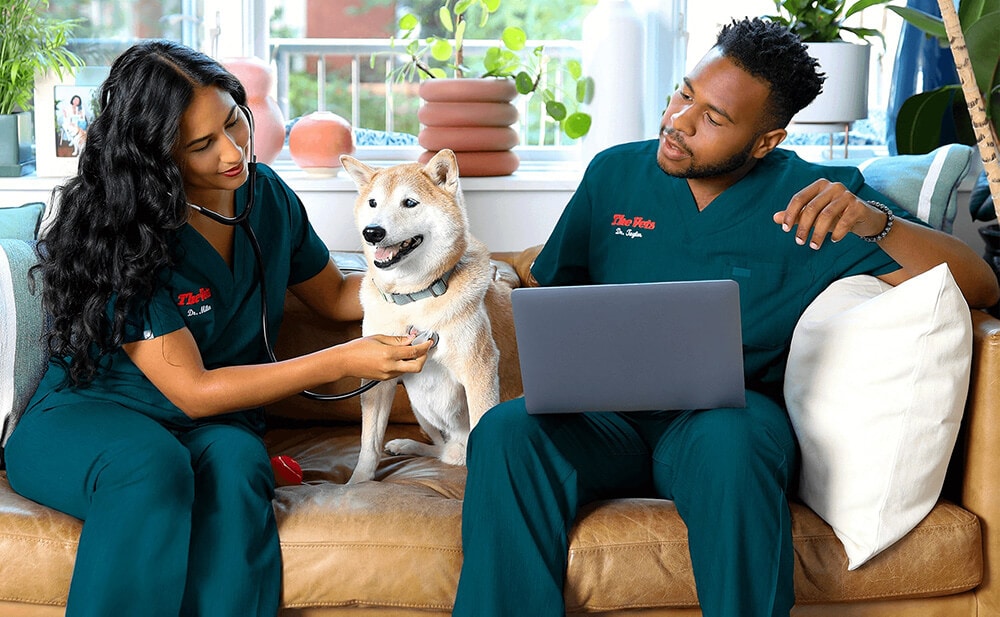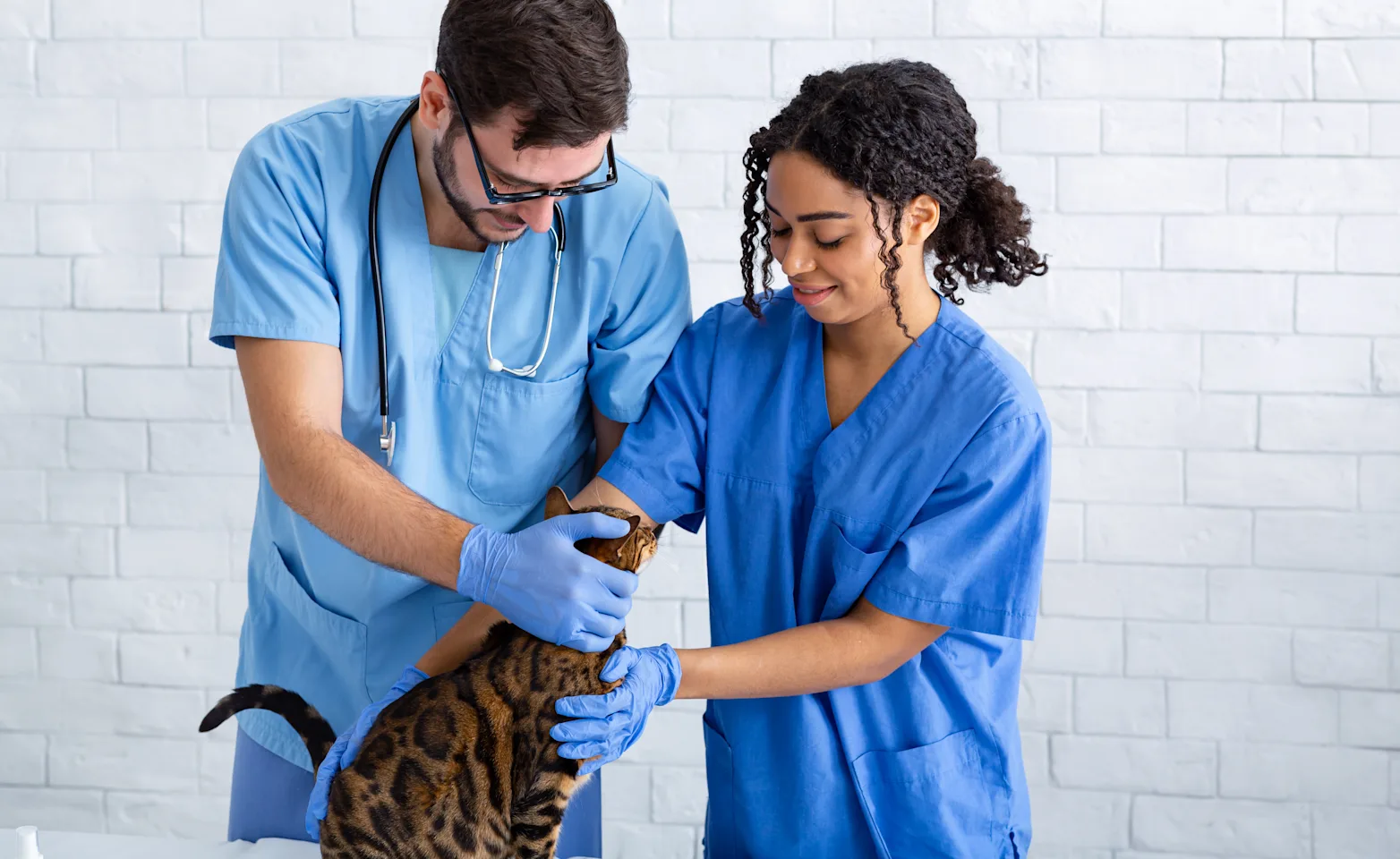Understanding the Science and Success Rate of tplo surgery for dogs
Understanding the Science and Success Rate of tplo surgery for dogs
Blog Article
Everything About Vet Surgery: Comprehending the Value of Expert Look After Your Animals
Vet surgical treatment is a critical element of pet dog medical care. It encompasses numerous procedures, from regular elective surgeries to immediate treatments. Comprehending the ins and outs of these surgeries can assist pet proprietors make informed choices. The prep work, execution, and recovery phases are essential for guaranteeing the wellness of pets. With proper understanding, proprietors can navigate the complexities of vet care. What elements should be considered prior to a family pet goes through surgical treatment?
Sorts Of Veterinarian Surgeries
When an animal requires surgical intervention, recognizing the different sorts of veterinarian surgical procedures can aid pet owners make educated choices. Vet surgeries can be extensively classified right into three main kinds: optional, urgent, and emergency surgical procedures. Optional surgeries, such as spaying or neutering, are planned procedures that are not quickly life-threatening. Urgent surgeries, like those for foreign body removal, need to be done soon yet are not life-threatening in the moment. Emergency surgeries, such as those dealing with serious injury or interior bleeding, are crucial and need immediate attention.Additionally, surgical procedures can differ in intricacy, varying from minimally invasive laparoscopic procedures to a lot more substantial open surgeries. Each kind of surgery brings its very own threats and recovery procedures. Comprehending these groups permits family pet owners to engage in meaningful discussions with veterinarians, leading to far better outcomes for their cherished pet dogs.
Getting ready for Your Pet dog's Surgery
Planning for a pet dog's surgical treatment involves a detailed checklist to guarantee all fundamentals are covered. Effective communication with the veterinarian is vital for understanding the procedure and any type of required pre-operative actions - tplo surgery for dogs. In addition, having clear post-operative treatment instructions will certainly assist owners supply the best support for their recovering animals
Pre-Surgery Checklist Fundamentals
Assuring a smooth surgical experience for an animal requires careful preparation and attention to information. A pre-surgery checklist is essential for pet dog owners to follow. First, verifying the scheduled surgical procedure date and time is important. Owners ought to additionally validate that their pet has actually not eaten according to the veterinarian's directions, generally for 8-12 hours before surgery. Gathering needed clinical documents, including vaccination history, is very important for the vet's evaluation. It is additionally recommended to prepare a comfortable room at home for the pet dog's recuperation after surgical treatment. Finally, owners ought to have a prepare for transportation to and from the veterinary clinic, ensuring that the family pet is protected and comfortable throughout the journey. Adhering to these actions can significantly enhance the surgical experience.
Interacting With Your Veterinarian

Effective interaction with the veterinarian is necessary for a successful surgical experience for family pets. Owners must be prepared to discuss their animal's clinical background, consisting of any kind of pre-existing problems, drugs, and allergic reactions. This details assists the veterinarian examine risks and tailor the medical plan accordingly. In addition, pet dog proprietors should ask concerns regarding the treatment, anesthetic, and expected results to guarantee they completely understand the procedure. Clearing up any kind of uncertainties can reduce stress and anxiety for both the animal and the owner. It is likewise important to connect any behavioral adjustments or issues observed in the pet dog leading up to the surgical procedure. Eventually, clear discussion fosters depend on and partnership, ensuring that pets get the most effective possible care throughout their surgical journey.
Post-Operative Treatment Instructions
After going over the operation with the veterinarian, animal owners should concentrate on post-operative care directions to assist in a smooth recovery for their pet dogs. These guidelines normally include monitoring the medical website for indicators of infection, such as inflammation or discharge. Animals may require to be kept one's cool and restricted to stop extreme movement that might disrupt recovery. Discomfort administration is important, so proprietors must follow the veterinarian's support on administering medicines. Furthermore, dietary limitations may be suggested to prevent gastrointestinal distress. Routine follow-up appointments are vital to assure correct recovery and deal with any kind of worries. By sticking to these post-operative treatment directions, pet proprietors can considerably add to their animal's healing and total health.
The Surgery Explained
The medical process for family pets incorporates vital actions that guarantee their safety and security and healing. Pre-surgery prep work are important for reducing risks, while post-operative care standards play a vital role in promoting recovery. Comprehending these elements helps pet owners navigate the surgical experience better.
Pre-Surgery Preparations
Prior to a family pet undergoes surgery, several crucial preparations must happen to guarantee a safe and successful procedure. Initially, an extensive vet evaluation is vital to analyze the pet dog's total health and identify any kind of potential risks. This may consist of blood examinations, imaging, or other diagnostics. The veterinarian will certainly additionally discuss anesthetic choices customized to the family pet's particular needs. Furthermore, family pet owners are usually advised to withhold food and water for a specified time before surgical treatment to reduce the threat of complications throughout anesthetic. It's important for owners to provide a total case history, consisting of any kind of drugs or allergies, guaranteeing the medical team has all necessary info. Appropriate communication and adherence to pre-surgery guidelines can substantially boost the end result of the procedure.
Post-Operative Care Guidelines
Proper post-operative treatment is important for ensuring a pet dog's recovery complying with surgical procedure. After the procedure, animals ought to be kept track of very closely for any indications of issues, such as excessive bleeding, swelling, or unusual actions. It is crucial to follow the veterinarian's directions pertaining to medicines, including painkiller and prescription antibiotics. Animals ought to be maintained in a quiet, comfy atmosphere to decrease stress and promote recovery. Restricting task is vital; short, leashed walks may be needed, but leaping or running must be stayed clear of. Routine follow-up consultations need to be arranged to analyze the healing process. Furthermore, the surgical site should be kept tidy and completely dry, with any kind of indications of infection reported to a vet immediately. Sticking to these standards boosts healing end results.
Anesthetic and Discomfort Administration
Effective anesthesia and discomfort management are necessary elements of vet surgical procedure, making sure that family pets remain comfortable and safe throughout the procedure. Veterinarians examine each pet dog's individual demands, taking into consideration factors such as age, weight, health and wellness status, and the kind of surgical treatment being performed.Anesthesia methods commonly consist of a mix of pre-anesthetic medicines, induction representatives, and inhalant anesthetics, permitting exact control over the pet's level of awareness. Tracking during surgery is important; vets continually observe crucial indications to deal with any kind of possible issues promptly.Pain administration techniques may include opioids, non-steroidal anti-inflammatory medicines (NSAIDs), and regional anesthetics, customized to the pet dog's certain circumstance. This multifaceted method assists minimize discomfort and advertises a smoother medical experience. By focusing on efficient anesthetic and discomfort administration, veterinary specialists improve the overall welfare of family pets undertaking procedures, guaranteeing they receive the greatest requirement of treatment.
Post-Operative Care and Healing
Adhering to surgical procedure, the emphasis changes to post-operative treatment and healing, which is necessary for ensuring a family pet's secure return to normal tasks. During this duration, animals require a peaceful, comfy atmosphere to help healing. Proprietors must very closely monitor their animals for any signs of pain or unusual behavior.Veterinary standards often consist of details instructions related to medicine management, wound treatment, and nutritional adjustments. It is vital to follow read the full info here these recommendations to lessen issues and promote recovery. Pet dogs might need to be restricted from strenuous activities, such as running or leaping, throughout their healing period (emergency vet near me).Regular follow-up appointments with the veterinarian enable tracking of the family pet's progress and prompt modifications to the treatment strategy. Supplying emotional assistance and friendship can likewise boost a pet's recovery experience, helping to alleviate stress and anxiousness. Generally, thorough post-operative care plays a considerable function in accomplishing a successful recuperation
Recognizing Issues After Surgical Treatment
Exactly how can family pet proprietors determine problems after surgical treatment? Understanding of specific signs is crucial for ensuring the well-being of pet dogs throughout recuperation. Typical indications include too much swelling, inflammation, or discharge at the surgical website, which may signify infection. In look what i found addition, relentless pain, shown by whining or reluctance to relocate, ought to trigger instant attention. Modifications in appetite or water consumption can also indicate complications; a decline in these behaviors may signify discomfort or distress.Moreover, pet dog proprietors need to check their animals for any unusual behavior, such as lethargy or problem breathing, as these can be indications of severe concerns. Throwing up or looseness of the bowels following surgical treatment may require urgent vet examination. Recognizing these difficulties early can significantly influence a pet dog's recovery process, highlighting the significance of alertness and timely communication with a vet for any concerning symptoms.
The Duty of Vet Specialists in Surgical Care
Vet professionals play an important duty in guaranteeing the security and success of surgical procedures for pet dogs, particularly following surgical treatment when keeping an eye on and treatment are extremely important. These professionals include veterinarians, veterinary service technicians, and assistance personnel, every one of whom add specialized abilities to the surgical process.Before surgical procedure, vets carry out detailed assessments to examine the family pet's wellness, making certain that any hidden conditions are handled. Throughout the procedure, the medical group supplies anesthetic, keeps sterile settings, and keeps track of crucial signs, all crucial for decreasing risks.Post-operative care is equally significant; veterinary specialists observe for problems, take care of pain, and guide owners on recuperation techniques. Their competence enables them to recognize very early indicators of distress or infection, making sure prompt treatment. Ultimately, the joint pet pain management initiatives of vet experts in surgical treatment promote a risk-free environment, promoting the health of pet dogs throughout the surgical trip.

Often Asked Questions
Just how Do I Choose the Right Vet Cosmetic Surgeon for My Pet dog?
Picking the best vet cosmetic surgeon includes researching certifications, reading reviews, and reviewing the clinic's setting. It is vital to assess the cosmetic surgeon's experience with specific treatments and their communication design when deciding.
What Are Common Misconceptions About Vet Surgeries?
Common false impressions about veterinarian surgical procedures include beliefs that they are always risky, unneeded, or for emergencies. Many family pet owners take too lightly the advantages of precautionary treatments and the ability involved in vet medical care.
How Much Will My Animal's Surgical procedure Price?
The price of a pet dog's surgery can differ substantially based upon aspects such as the kind of procedure, the veterinarian's experience, and geographical location (canine tplo surgery). Typically, expenses range from a couple of hundred to several thousand dollars

Can My Animal Eat Before Surgical Procedure?
Before surgery, it is normally advised that pet dogs avoid consuming for a certain period. This fasting helps in reducing the risk of complications during anesthetic. Owners should consult their vet for accurate guidelines tailored to their pet's demands.
What happens if My Pet Dog Has Pre-Existing Health Issues?
When a family pet has pre-existing health problems, it's crucial for the veterinarian to analyze these variables before surgical treatment. This examination guarantees appropriate preventative measures are taken, minimizing dangers and optimizing the family pet's overall safety and security during the treatment.
Report this page